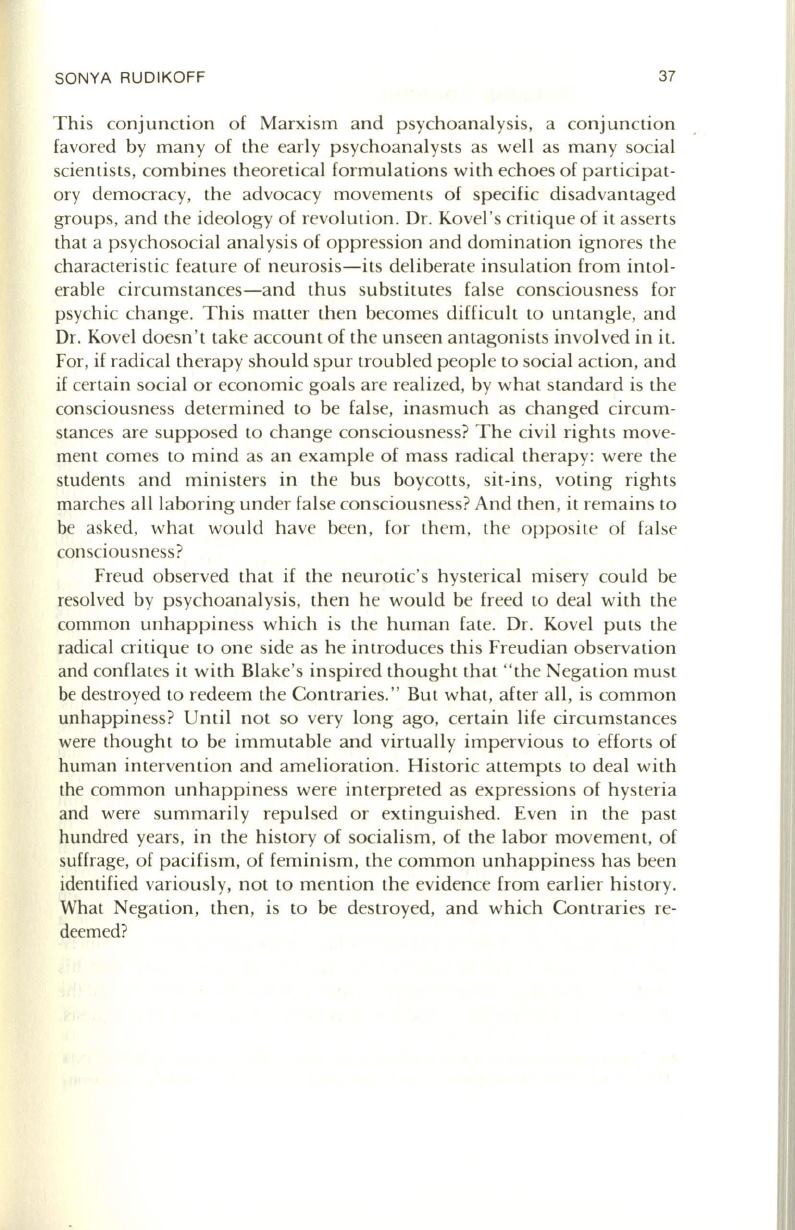
SONYA RUDIKOFF
37
This conjunction of Marxism and psychoanalysis, a conjunction
favored by many of the early psychoanalysts as well as many social
scientists, combines theoretical formulations with echoes of participat–
ory democracy, the advocacy movements of specific disadvantaged
groups, and the ideology of revolution. Dr. Kovel's critique of it asserts
that a psychosocial analysis of oppression and domination ignores the
characteristic feature of neurosis-its deliberate insulation from intol–
erable circumstances-and thus substitutes false consciousness for
psychic change. This matter then becomes difficult to untangle, and
Dr. Kovel doesn ' t take account of the unseen antagonists involved in it.
For, if radical therapy should spur troubled people to social action, and
if certain social or economic goals are realized, by what standard is the
consciousness determined
to
be false, inasmuch as changed circum–
stances are supposed
to
change consciousness? The civil rights move–
ment comes to mind as an example of mass radical therapy: were the
students and ministers in the bus boycotts, sit-ins, voting rights
marches all laboring under false consciousness? And then, it remains to
be asked, what would have been, for them, the opposite of false
consciousness?
Freud observed that if the neurotic's hysterical misery could be
resolved by psychoanalysis, then he would be freed
to
deal with the
common unhappiness which is the human fate. Dr. Kovel puts the
radical critique to one side as he introduces this Freudian observation
and conflates it with Blake's inspired thought that "the Negation must
be destroyed to redeem the Contraries." But what, after all, is common
unhappiness? Until not so very long ago, certain life circumstances
were thought to be immutable and virtually impervious to efforts of
human intervention and amelioration. Historic attempts to deal with
the common unhappiness were interpreted as expressions of hysteria
and were summarily repulsed or extinguished. Even in the past
hundred years, in the history of socialism, of the labor movement, of
suffrage, of pacifism, of feminism, the common unhappiness has been
identified variously, not
to
mention the evidence from earlier history.
What Negation, then, is to be destroyed, and which Contraries re–
deemed?


